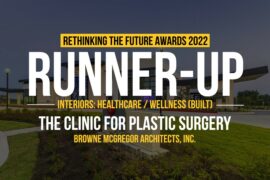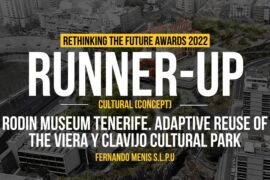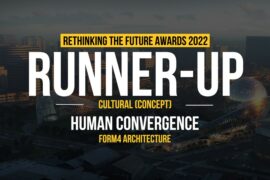This project proposes to reimagine the cemetery as a city that receives, houses and allows for Korean ancestor pilgrimage. Twice a year, Korean families visit their ancestors’ burial sites in order to maintain them, to prepare and cook meals for the ancestors, and to spiritually commune with them. This ancestral rite, in modern rationalist terms, is excessive and contradictory as it is inefficient and requires a great deal of unproductive labor and energy. This thesis project aims to investigate the notion of excess and unconditional expenditure to ultimately invent new architectural typology for such event or activities.
Participant Name: Young Jun Yi
Country: United States
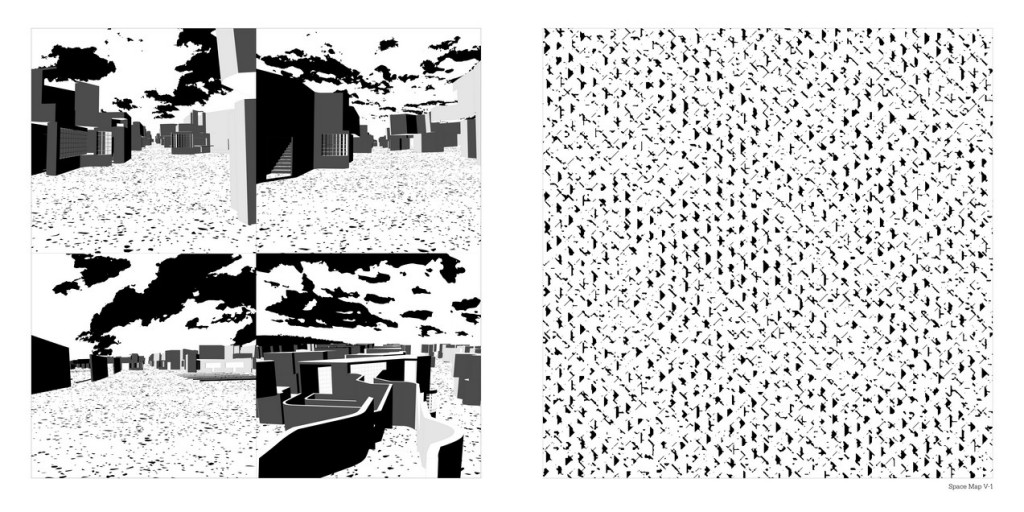
Architectural form of such unconditional (or unproductive) expenditure of resources (whether it is labor or materials) is unlikely to be found in most cases as architecture is inherently devoid of excess due to its basic functionalism. Site-specific and program-specific feature is considered a paradigm in architectural design; and material, labor, time and money are spent to have ‘expected’ physical space. In other words, everything that is invested in architecture is considered a ‘conditional expenditure.’ However there exists ‘excess’ in architecture at a specific moment where contradicting event happens in a genetically different program. An archetypal model could be OMA’s famous Programmatic Lava diagram for Yokohama Masterplan, as it tries to infiltrate various programs into market place where temporary vacancy occurs. By doing so, physical space of market place turns into an unconditional expenditure and a new lens through which we see the events happening within. This superimposed multiplicity of heterogeneous activities is a key feature of architectural form of unconditional expenditure. However, the Yokohama Masterplan fails to crystallize its architectural form because of the scheme’s fundamental paradox – if you design a form to contain such activities, the form becomes a product of conditional expenditure…
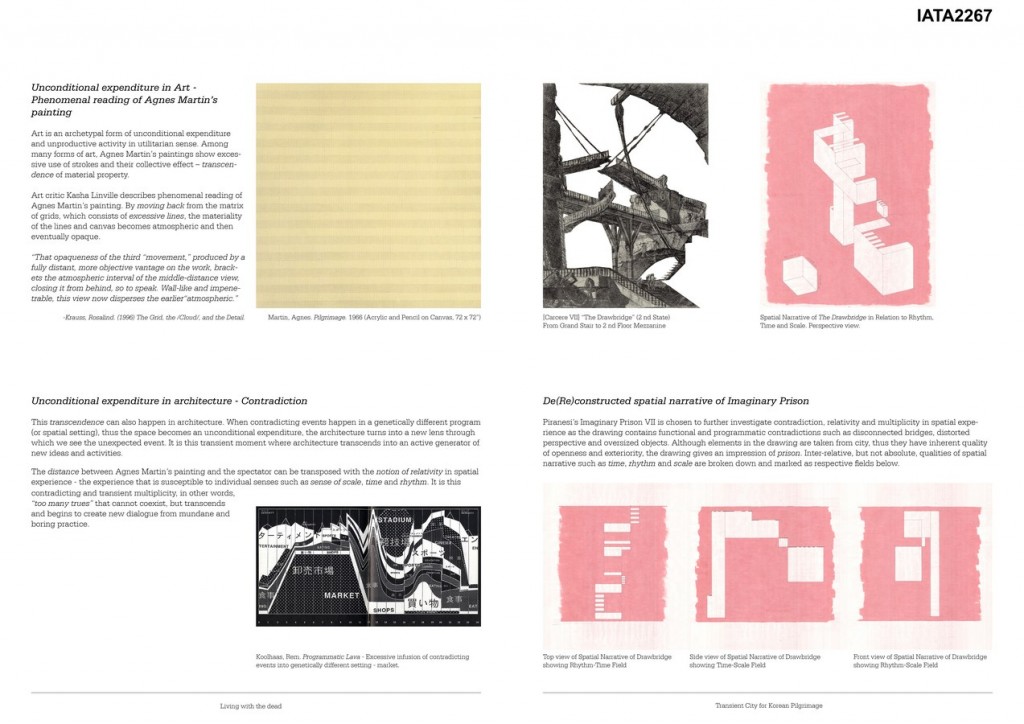
Architectural form of unconditional expenditure cannot be designed by general architectural design methodology because such methodology is heavily based on utilitarian doctrines. Thus, this project borrows a methodology from American abstract painter Agnes Martin, whose paintings are known for excessive use of strokes and their collective effect – superimposed multiplicity of readings. According to art critic Kasha Linville, by moving back from the matrix of grids, which consists of excessive lines, the materiality of the lines and canvas becomes atmospheric and then eventually opaque as one proceeds further. This fluctuation of perceptual identity is what allows for multiplicity of reading, heterogeneity, and relativity of her painting – which is also called ‘abstract sublime.’
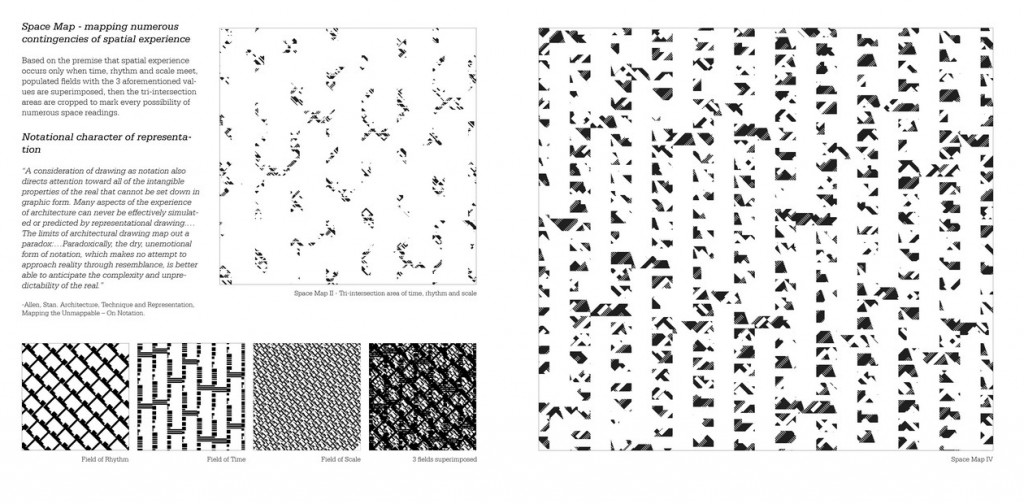
As a point of departure to finally create the architectural form of unconditional expenditure, I studied and de(re)constructed spatial narratives of Piranesi’s Imaginary Prison using borrowed methodology from Agnes Martin’s art – distance and resulting relativity in spatial experience. As a generative tool for form-making, Imaginary Prison’s heterogeneous elements and numerous possible spatial narratives are broken down as relative fields of time, scale and rhythm; definitions as below.
Spatial narrative from the grand stair to second floor mezzanine of Piranesi’s ‘Carcere VII’ (2nd state)
- Time – Not absolute time, but relative time
- Rhythm – Spatial density that observer experiences by light / shadow alteration and architectural elements (such as stairs, row of pillars, overhead structures)
- Scale – Not absolute size or distance, but relative size that observer experiences by comparison between perceivable space and currently occupying space
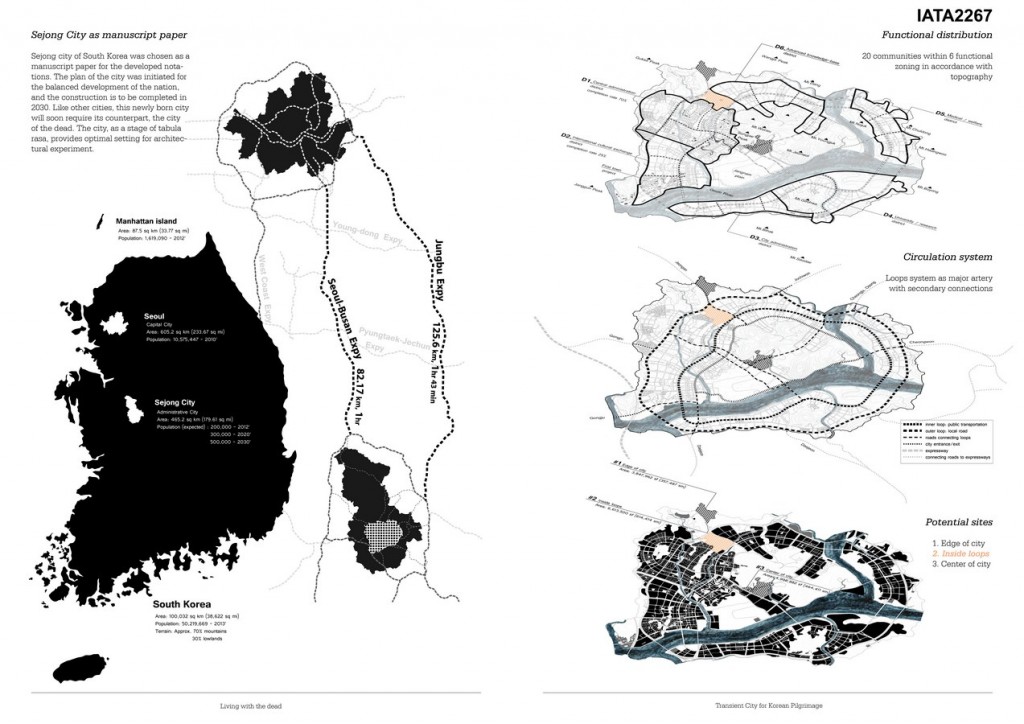
Based on the premise that spatial experience (or event) only occurs when all three values exist at the same time, respective fields are superimposed and only tri-intersecting areas of aforementioned values are kept to mark mapping of events. The result of this mapping is a series of Space Maps, which naturally contains notational character waiting to be played / rendered on site…
Twice a year, the field will be populated by pilgrims from the entire nation. Then pilgrims navigate their way through the scattered notations, constructing their own way to find their ancestor’s burial site as well as recollection. The narrative of this journey will be varied and different each time based on when or where they start the journey.


